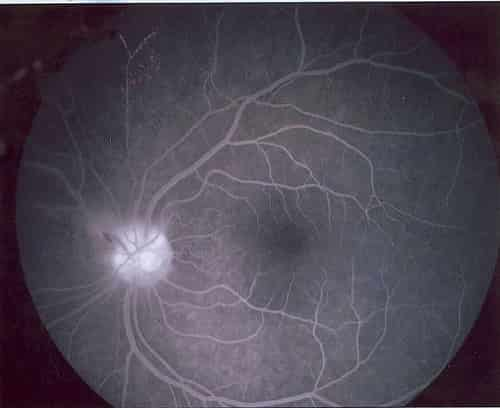Fluorescein angiography, often regarded as a pivot in diagnosing certain eye conditions, is a medical procedure. Employing this technique, ophthalmologists are equipped to analyze the circulatory pattern in the retina and choroid, two crucial components nestled in the back of the eye.
How Is Fluorescein Angiography Performed?
During a fluorescein angiography procedure, a healthcare provider injects a fluorescent dye into a vein in the patient’s hand or arm using a small needle. Using a specialized camera with certain filters, images are carefully taken as the dye travels through the blood vessels in the patient’s eye. This rapid movement of the dye enables the ophthalmologist to identify any abnormalities such as leaks, blockages, inflammation, or abnormal growth of blood vessels.
Applications of Fluorescein Angiography

Primarily, fluorescein angiography arms the doctors with detailed insights and aids in diagnosing several eye disorders, most commonly:
- Diabetic retinopathy
- Macular degeneration
- Retinal vein occlusion
- Retinal artery occlusion
- Macular edema
- Swelling or inflammation of the optic nerve or retina
- Cancer of the eye
What to Expect During and After the Procedure?
The procedure itself is relatively quick, typically taking around 10 to 20 minutes. The patient may experience a brief sensation of heat or nausea when the dye is injected, but this generally subsides quickly. Post-procedure, the patient’s urine might appear darker or discoloured due to the elimination of dye, which is completely normal and nothing to be concerned about. It’s important for patients to know that the fluorescein used in the procedure may cause the skin and eyes to temporarily yellow.
Risks Associated with Fluorescein Angiography
As with any medical procedure, there are potential risks associated with fluorescein angiography. Allergies or adverse reactions to the dye are rare, but they can occur, including hives, itching, and, in severe instances, difficulty breathing. It should also be noted that fluorescein angiography is not recommended for individuals with kidney problems due to the potential effect of the dye on kidney function.
Conclusion
Fluorescein angiography is a widely used and valuable tool in detecting and diagnosing a range of ocular conditions. Nevertheless, the associated risks and individual health considerations need careful attention before undergoing this procedure.
| Procedure | Purpose | Methods | Risks |
|---|---|---|---|
| Fluorescein Angiography | Diagnose eye conditions | Administer fluorescein dye and capture images | Allergic reaction to the dye, Kidney problems |





